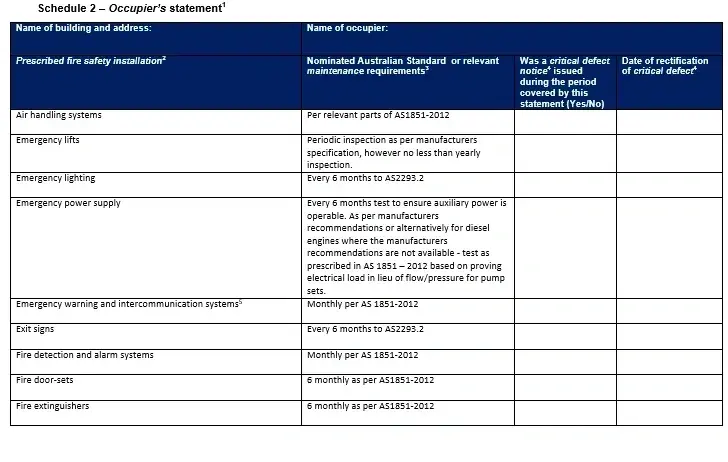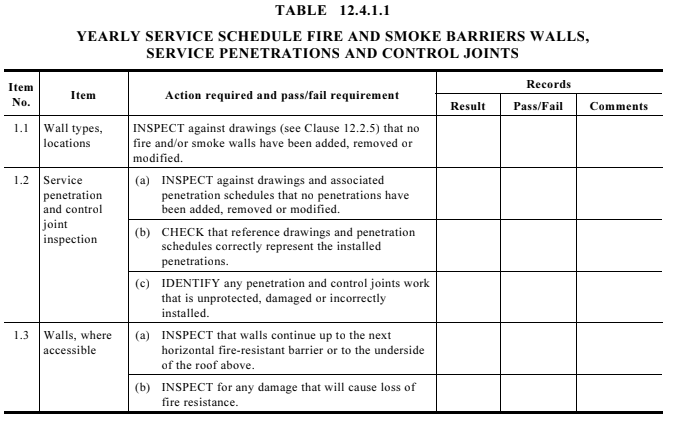Annual Owner/Occupier Statement vs Annual Fire Safety Statement in Queensland
- Azzo Project Services
- Aug 8
- 3 min read
Understanding the Difference and Your Compliance Obligations
If you manage or own a building in Queensland, you may have heard the terms Annual Owner/Occupier Statement and Annual Fire Safety Statement (AFSS).
They sound similar—but they serve different purposes, follow different processes, and are required under different circumstances. Knowing which applies to your building is essential to avoid compliance gaps (and penalties).
At Azzo Project Services, we’re here to make the distinction clear.
_____________________________________________________________
Annual Owner/Occupier Statement
An Annual Owner/Occupier Statement is a self-declaration from the building’s owner or occupier confirming that all prescribed fire safety installations have been maintained in accordance with Queensland’s Building Fire Safety Regulation 2008.
When Is It Required?
Required every 12 months for buildings that have prescribed fire safety installations (e.g. fire detection systems, passive fire systems, exit lighting, hose reels, etc.)
Applies across Queensland for a broad range of building classes
What Does It Cover?
Confirms that all fire safety measures are maintained and tested according to required schedules
Can include both active systems (sprinklers, alarms) and passive systems (fire doors, fire-rated penetrations)
Who Initiates and Carries It Out?
Initiated by: The building owner or their authorised agent
Carried out by: Maintenance contractors for servicing; statement signed by the owner or occupier

_____________________________________________________________
Annual Fire Safety Statement (AFSS)
The Annual Fire Safety Statement is a formal certification document required under the Queensland Development Code (and also used in NSW and other jurisdictions) for certain buildings—especially high-risk or high-occupancy properties.
It goes beyond the Owner/Occupier Statement by requiring accredited persons to certify that each fire safety measure:
Has been assessed, inspected, and tested
Is capable of performing to the standard required by the building’s fire safety schedule
When Is It Required?
Every 12 months (or as specified in your building’s approval conditions)
Often applies to high-rise residential, commercial, healthcare, or assembly buildings where fire safety measures are critical for public safety
What Does It Cover?
Lists all fire safety measures in the building’s fire safety schedule
Confirms each has been inspected by a competent fire safety practitioner and is functioning to the required performance level
Who Initiates and Carries It Out?
Initiated by: Building owner or strata manager
Carried out by: Competent fire safety practitioners for inspection/testing, followed by owner sign-off before submission to local government or fire authority

Example of Listed Fire Safety Measures in an AFSS
_____________________________________________________________
Key Differences at a Glance
ASPECT | ANNUAL OWNER/OCCUPIER STATEMENT | ANNUAL FIRE SAFETY STATEMENT (AFSS) |
Purpose | Confirms maintenance of fire safety measures | Certifies performance of fire safety measures |
When | Every 12 months | Every 12 months (or as specified) |
Initiated By | Owner or occupier | Owner or strata manager |
Who Tests | Maintainence contractors | Acredited / competent fire safety practitioners |
Level of Detail | General compliance confirmation | Detailed performance certification against building fire safety schedule |
Lodgement | Kept of recor; may be submitted to QFES or council | Lodged with council and/or fire authority |

_____________________________________________________________
Why It Matters to Know the Difference
Submitting the wrong document—or failing to submit the required one—can result in fines, compliance notices, or enforcement action.
The Owner/Occupier Statement focuses on maintenance records.
The AFSS focuses on certifying that systems still perform to design requirements.
_____________________________________________________________
How Azzo Project Services Can Help
We assist building owners and managers across Queensland by:
Inspecting and verifying passive fire systems
Providing audits for Owner/Occupier Statements
Supporting performance certification for AFSS
Offering compliance checklists and pre-audit inspections
Contact us today to make annual compliance simple and stress-free.
_____________________________________________________________
References
Australian Building Codes Board. (2022). National Construction Code 2022, Volume One: Building Code of Australia, Class 2 to Class 9 Buildings. https://ncc.abcb.gov.au/
Building Fire Safety Regulation 2008 (Qld). (2024). Queensland Government. https://www.legislation.qld.gov.au/view/html/inforce/current/sl-2008-0157
Queensland Fire and Emergency Services. (2023). Fire safety management in buildings.
Queensland Government. https://www.qfes.qld.gov.au/prepare/fire-safety-in-buildings
Queensland Government. (2023). Annual fire safety statements. Department of Housing, Local Government, Planning and Public Works. https://www.hpw.qld.gov.au



Comments